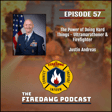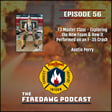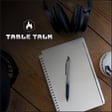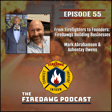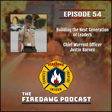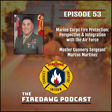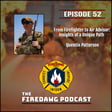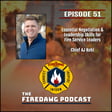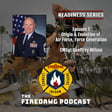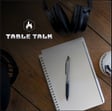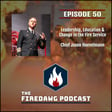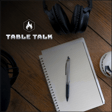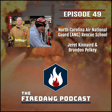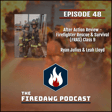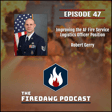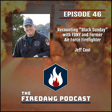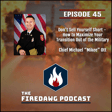Become a Creator today!Start creating today - Share your story with the world!
Start for free
00:00:00
00:00:01

Readiness Series 2. From Bar Napkin to Combat-Ready: Shaping the AF F&ES Role in the Future Fight - CMSgt (ret.) Phillip Winkelmann, CMSgt Mark Abrahamson, and SMSgt Jesse Marshall
In this episode, Matt is joined by three leaders who played a pivotal role in shaping the AF F&ES Concept of Employment: CMSgt (ret.) Phillip Winkelmann, CMSgt Mark Abrahamson, and SMSgt Jesse Marshall. During the Air Force’s transition to AFFOGEN, they were in unique positions to help lay the foundation for the F&ES framework we have today.
Chief Winkelmann, the former Air Force Fire Protection Career Field Manager, along with Chief Abrahamson and Senior Marshall, discuss and offer insights into how the Concept of Employment came together.
Transcript
Introduction to Air Force Firefighter Preparedness
00:00:00
Speaker
This is the Firedog Podcast.
00:00:13
Speaker
Welcome my name is Matt Wilson and thank you for joining us for episode two of the readiness series on the fire dog podcast. The readiness series will focus on all aspects of Air Force firefighter wartime preparedness. Throughout the series we will explore the origin and details of the fire emergency services concept of employment, techniques, tactics and procedures, examine equipment packages and much more.
00:00:32
Speaker
If you have any ideas for topics you'd like us to cover, we'd love to hear from you. You can reach out to us at thefiredogpodcast.gmail dot.com. That is the Fire DAWG podcast.
Guest Introductions and Backgrounds
00:00:41
Speaker
While the series emphasizes topics related to wartime readiness, rest assured that all information shared is unclassified, publicly available, and free of sensitive content. In today's episode, I'm excited to be joined by Chief Master Sergeant retired Philip Winkleman, Chief Master Sergeant Mark Abrahamson, and Senior Master Sergeant Jesse Marshall. Chief Winkleman, of course, is our former Air Force Fire and Emergency Services, career field manager.
00:01:01
Speaker
along with Chief Abrahamson and Senior Marshal.
Development of Fire and Emergency Services Concepts
00:01:04
Speaker
They were instrumental in the early development of our Fire and Emergency Services concept of employment. In this episode, we discuss the development of this concept and share insights into how they arrived at the current methods of employing forces in a contingency environment. It is my pleasure to welcome Chief Wekelman, Chief Abrahamson, and Senior Marshal.
00:01:21
Speaker
All right, gentlemen, welcome. So I'd like to start out by giving each of you an opportunity to introduce yourselves. You know, tell us what you're up to now and what you did previously and how that's relevant to what we're going to talk about today, which is F and&ES contingency concept of employment and kind of how it was born.
Transition to New Air Force Generation Concept
00:01:40
Speaker
Chief Wink, if you want to go first, hopefully that's okay that I call you chief. It's a hard habit to break. That's a hard habit for everybody to break, including myself. Thanks, Matt.
00:01:49
Speaker
Chief Matt Sartan retired, Phil Winkleman, was the career field manager for the last three and a half, four years. ah Kind of walked in day one to the revitalization of readiness up on the headquarters staff because of everything going on. And was fortunate enough to have the right people in the right places at the right time to really create something that was pretty cool. And then I'll turn it over to my cohorts in crime. You wanna go ahead and go Mark?
00:02:16
Speaker
Yeah, ah Chief Master Mark Abrahamson, about to be retired, ah currently at AFIMSC as the Expeditionary Requirements Development Manager for Fire and Emergency Services. um Previously and in kind of what brought me into this role is being um one of the ah senior enlisted in ACC um after we lost the ACC yeah command staff, um just being in the command. And as this whole thing started to develop, being stationed at Moody and with everything going on there, I was at the right time at the right place to to get involved in in this whole process. So ah just a fortunate opportunity that levied on me based on where I was at and being a senior enlisted member within the career field.
00:03:03
Speaker
Chief Abrahamson, we're going to talk about this a little later, but Moody was a lead wing, right? and the that is early That is correct. yeah Yeah, we were one of four bases that started off as a lead wing when when that whole thing was developing. And and Moody kind of took the the tip of the spear, if you will, um with ACC on trying to determine how are we going to employ Ace. And so it it afforded us a ah great opportunity and because, and I think we'll get into this later,
00:03:33
Speaker
just being able to take all our concepts and then put them into action immediately and test them out. So we had ah a good timeframe and a good opportunity to do that. Jesse. I'm a senior mass sergeant, Jesse Marshall. I am currently in Hawaii stationed at Hickam. I'm Air Force IMSC detachment two for PACF and Previous to that, about six months ago, I was the force development manager working directly for ah Chief Wink. And he's the one that wrote me into um the beginnings of AfroGen and ACE and ah the vision moving forward.
Adapting to New Challenges and Operational Strategies
00:04:16
Speaker
And my role in it was how are we going to prepare our firefighters for the next fight? And that's what I worked on for the last two years.
00:04:26
Speaker
over Excellent. Well, I appreciate each one of you coming on here and taking the time to explain to us how all of this started. I think a lot of people are curious to include myself. And so we'll just get right into it. Chief Winkleman provided me with you know a list of talking points. The first one was the beginning, quote unquote, go do. now So I'd like to kick off the conversation by talking about the beginning of the development. you know What did it look like from a career field manager perspective when you're told to transition the career field to this new scheme of maneuver, this new Air Force Force generation concept?
00:05:07
Speaker
Yeah, so it it all started pretty much in the Charlotte Fire Conference back in 2019. We went there and we had some some pretty high level briefs in ah the fire panel. And we're sitting there, Chief Abrahamson was there, myself and a few others. And you're starting to see the development of Africa and you're starting to hear from senior leaders on, we need to move to this to revitalize readiness. And you're starting to hear the whispers about it in the highest levels. And then you hear briefings and you see that you can see the future. You can see what the concepts are going to look like.
00:05:43
Speaker
And then you can see from a fire perspective that we're all over the place. Like we have different schools of thought coming out of each and every command, whether it be ACC, USAFE, PACF, guard, reserve, everyone has a different idea of what this should look like and is employing it that way. And from a, from a higher level perspective, you sit there and you're like, we can, we can never get organized and get to what right looks like if we don't know what we do from the top down. And chief Pittman,
00:06:11
Speaker
And Chief Morris at the time both saw this as well. And and after those briefings, we we sat down and we talked about it. And they both said, listen, we need to get all of our stuff in the same sock. You need to move out and you need to fix this. Do what you need to do. This is going to be your number one task coming out. Because Chief Pittman might be far and away the smartest person I know to date. And he saw it from the beginning and said, go do. I'll let the others chime in if they have anything else. I think Mark was there too.
00:06:41
Speaker
Yeah, yeah, it was ah it was a good conversation because I imagine everybody in ah in a room and everyone's got different ideas on what their command is kind of trying to bring to the table on this. And you know nobody's kind of agreeing because everyone comes from a different perspective. So we're all kind of, hey, this is what ACC is doing. This is what you safety is doing. PACF is over here. so um So it was very confusing at that time. and it it was it was A good a good start for Chief Pittman to say alright hey I need everybody to come together and and develop one plan that our community is going to do going forward. So it was it was. That was pretty much the kickoff. The the brainstorming session, if you will, um that sparked everything going forward.
00:07:29
Speaker
What were some of the disagreements on, or you said that PACF is doing something different than ACC? Can you provide an example? with yeah Yeah, so everybody has kind of a different AOR, right? You say if you're in PACF, you're already in place. PACF is a little different. you know they They're all water-based. so How are they going to move forces and and so on? Whereas USAFE is pretty much all land-based. So their tactical and and operational objectives were a little bit different. And then, of course, you look at ACC, and and ACC is you know within the continental United States. So it's not about what we're doing and at the specific place. It's about how we're going to go forward. So we're thinking of two ALRs.
00:08:13
Speaker
and And none of us were kind of on the same thing, right? And and it's not just coming from you know the the fire representation. It's the entire command and how we approach it. So so at the time, it it was a bit confusing to see, all right, how are how are we going to do um you know force employment in all these different objectives and operational planning um when we don't have a ah solid structure to begin with?
00:08:41
Speaker
It sounds to me like logistics was a big, obviously it's a big piece of everything or, you know, moving and generating forces. Was that kind of the bulk of it? You know, you talk about moving logistically among the sea and then, or even like, you know, your supply, your supply chain is going to be better ah continental the United States than it is in Pacific air forces. Am I right in saying that? but just Yeah, young are yeah are you're pretty close on that one, but a lot of it was, um,
00:09:12
Speaker
To be quite frank, a lot of these commands keep not understanding the dynamic and the battleground we were going to. right When you look at their plans and what they want to do, it now when you look back at it, it's like there's no way this would have worked. But at the time, they had it in their mind that we've done it this way for 20 years. We can keep doing it this way, and we can still be the dominant force in the world, and nobody's going to stop us. And it it took a lot for people at the highest levels, whether it be combatant commanders or even firefighters, to realize that it it was adapter die. Change or die was basically the way it had to be moving forward. Jesse, any perspective from your side of the house on that? Like the beginnings? No. So Chief Wank and Chief Abrahamson have really been, you know,
00:10:02
Speaker
ah the visionary leaders that we needed. And I didn't come on board until March of 22. So everything that happened before then behind the scenes, it was it was really all all of their brainchild ah that drove us to where we're are where we are today. Gotcha.
00:10:23
Speaker
And we may get into this later, but I you know i wrote it down to bring it up. um And I remember Chief Wink, you talking about it maybe a couple of years ago, that was there Air Force specialties on the chopping block? Yeah, it's it goes to the conversation. Yeah, it goes to the conversation as we move forward.
00:10:40
Speaker
For sure. um I think from the beginning, there was AFSCs on the chopping block. There was a lot of them because as they started to get lightly and lethal, they look at the the relevancy of an AFSC or the relevancy of ah of a unit when you employ forces, right? If it's not combat capable and it's not and a complete part of a combat employment, why do I need it? And you saw a
Defining Mission Essential Tasks
00:11:05
Speaker
lot of that in the beginnings of this. It started to roll out, when and Mark can attest to this, when he was dealing lead weed stuff, you get out on the airfield, and you'd send the crew of lead weed people out there, and they'd they'd show up, and you'd look around, and it's like, why do I have a dentist? like why why is there Why is there a lawyer here? Why is why is this here? And you didn't it took a lot to get that together.
00:11:26
Speaker
So ah part of this, as we go forward, and I always like to say this to to our career field is that, I mean, nobody values us in fire and emergency services until they need us. And we're there's gonna be some themes of that as we move forward. And there were times as career field managers, we were sitting at the table as they tried to decide, and we're gonna talk about this in the future, MCA and some things like that. And there were many people that said, oh, we'll just MCA firefighting. And I was like, cool.
00:11:52
Speaker
You can do that. And then when I explained to them the totality of what fire and emergency services bring and what a force enabler we are as we move forward and how we do things and just, it was quiet in that room. Nobody wanted to be MCA firefighting because they cannot do what we do every day.
00:12:12
Speaker
you know I think our nature as firefighters in the civilian service or in the military is we are a Swiss army knife, you know we are and you see it dayto- day to day. I think when we started talking about this multi-capable piece of Air Force Force Generation, i it was kind of brought to my attention. you always knew you know When people call 911, they just want you to solve their problem. and So we we are exposed to ah complex problem sets that aren't necessarily a structure fire or an emergency medical situation. you know Maybe my dog is stuck in a fence, right? like And so I think that's just...
00:12:47
Speaker
I think that we marry perfectly with the idea of multi-capable. Like I said, I started focusing that on it a bit when when the idea started coming to fruition. and something is simple like i I went to combat arms training just last week, and one of the instructors there, who was um you know yeah they have people walking back and forth as you're shooting,
00:13:10
Speaker
And he had made a comment that CE shoots better, civil engineers shoot better than security forces when they come and do their quals. Anyways, I wanted to highlight that point that firefighters are perfect to employ in this kind of, you know in an agile common employment scheme maneuver where you need less people to do things. They can do multiple things, I guess, and it's within their nature to do so. so Well, let's talk about the, you you said the call for the first task. What exactly is that? Yeah. So as we're starting to develop this, a higher headquarters is sending out taskers and they're saying, okay, we're going to get after this. Here's a task or tell us how many people you need to stand up this new thing. We're going to call African and inside African, we're going to talk about having the RAB, the XAB and the EAB. And nobody knows that these are the first time anybody's heard these terms.
00:14:02
Speaker
Well, all of this came out, and of course, in in classic headquarters Air Force fashion, they
Testing and Refining Operational Strategies
00:14:07
Speaker
gave us like 48 hours to figure it out. Well, I am literally on the road traveling from my PCS across, so I'm not even in DC yet. Chief Morris and Chief Pittman are dealing with AFFF and they're actually out of pocket and can't even begin to deal with it. So lo and behold, I just call my right hand man. and He just happened to be in front of a computer and I was like, hey, Mark, I got this task for you and I'll let him finish what I had to do. Yeah, thanks. Good segue right into it, right? Nothing like a four o'clock on a Friday call and task are going forward. But um yeah, basically so we had we had the leads of um those putting together F4 Gen and they at first said, hey, we'll just take what the ah
00:14:55
Speaker
the wartime planning standard was, and we'll use that for fire, but you know traditionally we've always been too big um to to ah execute into this new F4 Gen system. So they had us ah shrink down. So it took me a couple of days to determine, all right, what is ACC and half ah trying to get after? and And then once we kind of understood what what the goal was,
00:15:22
Speaker
We were able to to take a look and slim down and say, what what is it that we actually need? you know If we get rid of you know levels of service from our brains and then start thinking critically on um a lot of the requirements that we need for deployment, we can shrink down and we can define exactly how many people and how much equipment we need.
00:15:42
Speaker
um to build these build these teams. so So it was about a week turnaround, of course. um That was just the initial ah phases to get something done on paper. And then for the next three or four months, it was just a continuous ah refinement of what F4Gen looks like. And of course, it's a lot different than on on what it looks like now. you know Everything has kind of transformed at least half a dozen times. so Um, it was just refining that over and over again. And then it was, well, why do you need, um, this amount of people and why do you need these amount of trucks? So, so that kind of pushed us into, all right. Um, we need to get something solidified and then determine, you know, what are the tasks that we are going to be doing and how can we justify the, the right number of people that, that goes forward on each of these teams within, um, half four gen. So.
00:16:35
Speaker
Yeah. Talking a bit about the mission essential task. What are we going to do in a contingency environment? So it's, I think what you explained is, you know, write those down. What are we doing? And like, what do we need to be able to accomplish those? Was there, were you stumped at any point? Like, gosh, we bring so much water and so many things. We're just so logistically heavy. Like, is this even possible?
00:17:00
Speaker
Yeah, so that that was our first meeting. So and after this thing went down with Chief A, and he kind of he threw out the the basic kind of kind of foundation of it, we all got together in San Antonio. I think it was December of 19, and we started to put it on the board about, OK, what's this look like? What do we need to bring? How do we do this? And that was that was a very trying week, because the individuals were there, and bless their hearts, they were all there for the right reasons.
00:17:26
Speaker
but Still, you can't get out of that mindset that we've built ourselves into over the last 20 years of, if I'm going to go, I'm going to have 7,000 firefighters, 25,000 gallons of water, and a coffee stand, right? And if I have that, I'm not going. And that was a mindset of a lot of people, right, wrong, or indifferent. It's it's changing that dynamic and getting your brain out of your head and send it to the side and truly looking at the requirements.
00:17:50
Speaker
And when Mark had to give those those numbers of people, we haven't even thought about mission essential tasks yet. Like what our requirements were down range. He just had like 2% of the requirement and had to go off of that. Is that fair, Mark?
00:18:04
Speaker
Yeah, absolutely. And then you know going back to our December meeting, you know it was it it was a challenge. Because rate right at that time, we hadn't made the decision whether or not are we going to support MCA? Are we going to the CL locations? And if so, if if that's if that's the way the community is moving forward, how many people is that? And can we do it with two or three? Or or does the team need to be bigger in sorting out those things? But again, yeah going to your point on logistics,
00:18:33
Speaker
Yeah, absolutely. um you know I think it takes, and and wink correct me if I'm wrong, like three C-17s in order to move a contingency of um you know P-19s, personnel, um and and all kinds of other equipment um for for a kind of a continuous team that we have in, say, Afsen. And shrinking that down,
00:18:58
Speaker
you know the requirement became, well, only two C-17s are going to move all equipment going to a Ford operating site. so How can you get a smaller footprint into that? Otherwise, we'll just keep you at the mob and then we'll just take the risk, but but we know that's not going to happen. right Eventually, it's going to come back and say, fire, you need to get in here. um so We had to think slimmer ah with regard to water, the trucks, and and the personnel and equipment that that we had to bring with us.
00:19:28
Speaker
And to that point, we had to think slimmer with our side of risk, and a risk informed decision from a fire and emergency services professional side and not a risk adverse decision from a flyer. We had to tell them what is right and not be told what they want. And that was a huge point going forward because this isn't a want side, this is a requirement side. So everything was built to that point of what does combat effective mean?
00:19:55
Speaker
How often was the level of service brought up as how much, how often was it a sticking point and moving forward like, well, hold on, we need X amount of gallons for a set one, two, three, four. At what point were we like, forget about standards or forget about NFPA standards, forget about all of our standards associated with manpower, water and agent.
00:20:20
Speaker
Like, let's, like you said, take your brain out of your head, put it to the side. And what do, like, how do we focus on just saving light? Like, when was the point brought in that we're less worried about the infrastructure, we're more worried about the people in a contingency environment? Man, I'll tell you what, if I had a dollar every time we had to talk about that. I bet. That's why I brought it up. But they're good conversations, like especially at that December meeting, they were good conversations that helped shape where we needed to get. you I mean, but every time you do something, you never want everybody on the same page. You need to have those staunch individuals that are going to come up and say, no, this is wrong because of this. And they're not doing it out of emotion. They're not doing it out of anything. They're doing it out of... They've been conditioned. Exactly. And it's helpful to help build where we're at.
00:21:08
Speaker
ah yeah that's Yeah, that's just i guess a natural evolution of change. you know you're noting You're not going to get everybody to just change their mind overnight. right It's ah a process. um But yeah, I just wanted to bring that up because and that was a big... so and Even to this day, I think that it's brought up.
00:21:28
Speaker
um although less often maybe as it was before. It's funny because our, my now commander, you know, Lieutenant Colonel, great guy, motivated on his second, maybe even first command. Anyways, he was briefing all of the changes, the future changes, the DCW, you know, the ATF stuff and then eventual DCW. He's briefing it to the unit, um doing, you know, what a good commander should do. And he looks over at us, he goes,
00:21:56
Speaker
And it it was in a slide deck that he had been provided from ah somebody at half and he's like, in fire, you're not going to have all the people that you would have.
Insights from Field Testing at Moody and Lead Wing
00:22:07
Speaker
in at in Garrison home station for firefighting. You're not going to have all the people that you want. You're not going to have all the trucks you want. like He was trying to you know give that point to us because he he anticipated that it would be a contentious thing, right? And we went up to him later like, hey, we we already know. you know like we're i wait I don't want to tell him like, hey, we're 10 steps ahead of you here. But it's like, yeah, we've we've been talking about this for years. Well, you know for at least a handful of years. But it's kind of funny. That's a great point, man. I mean, I don't think people out there really realize how
00:22:37
Speaker
tip of the spear we were is fire and marine services for the Air Force on this. when you When we look back on this and we see where everybody's going, and Mark can bring up some great points as well, and so can Jesse, we we truly as engineers led the way on this for the Air Force.
00:22:52
Speaker
Yeah, I think it's ah you know that that example, and what your commander said, it's a good point. So some of the feedback we got internally to to our own members and and from outside, it's it's all or none, right? it's All right, we need to bring this based on NFPA requirements or whatever our AFI says, or we can't go.
00:23:13
Speaker
Well, why does it have to be that way? I mean, we can still provide some service and and and some safety to things that that are required. Yeah, you're not going to have the same thing you're going to have at home station, but we're at a different risk than we are um in a wartime environment than we are at home station. So um you've got ah you've got to be able to adapt and and think a lot more critically on on how to bring something rather than just say, hey, the policy says this, I can't go, period.
00:23:43
Speaker
Let's get into some of the notes and bolts of it. If we can, I mean, you have provided a talking point about the, you know, so you, so you get this call, you get this task, this go do, um, kind of direction like, Hey, go figure this out. At what point did you put together a working group and what, you know, how did we start building what it looks like today?
00:24:04
Speaker
Yeah, so we had that first one in December where we brought him together and kind of took the numbers that Mark had worked in it on his little whiteboard in his office and sent up to hire headquarters. And we started to figure out how we're going to line them and how it was going to work. We had a couple more ah working groups, and and we really attacked this hard. But the big part of it was you know we can write all this stuff up on a whiteboard, and we can talk about it. But until we actually employ it, is any of this stuff really going to work?
00:24:34
Speaker
So again, ah Mark was was in the perfect position being the fire chief at Moody at the time, along with some others. And we looked heavily on him and lead wing when they were first starting that lead wing concept and had him go out and say, hey man, let's this talk to your senior leaders, put this stuff into action. And before at a half level, I take this product and I push it through the wickets of hierarchy for approval and blessing to the council of colonels and the generals and the A3 and everybody else.
00:25:02
Speaker
And I slap the table saying, this is our policy as Air Force Fire and Emergency Services. You know, let's see if this actually works. And I'll turn over to Mark. Yeah, absolutely. Great point. um So we had that meeting in December, and of course we didn't finalize everything that we wanted to get after, but it definitely laid a lot of groundwork because ah four months later we had an exercise that Moody was doing called Mosaic Tiger, and we had the opportunity to test out any strategies that we wanted to go after. so
00:25:34
Speaker
So we did all these exercises with ah with a 20-person crew, a 10-person crew, a 7-person crew, and then we tried it around with three people, right? So mixing it around, like how effective are all these things that we're bringing up for AFRIGEN? What can we really do? And um what do we want to agree on that our limits are? So so we did all those. And you know it was it was a great lessons learned. um And we just happened to be in the right opportunity to ah you know execute that during the exercise. um We had a good lessons learned, especially when we were testing out the Ford operating site. yeah The wing kept saying, hey, we don't need firefighters you know going forward or whatnot. And and I was slamming my hand down saying, yes yes, you do. and And the biggest thing that they kept coming up with was, well, if we have an in-flight emergency, we'll just send it back to the main operating base.
00:26:31
Speaker
And so I went down to Avon Park where our Ford operating site was. And sure enough, you know they had an in-flight emergency. And they're like, hey, we can't fly this thing back because it doesn't have enough fuel. We have to land it right here. And um and we had firefighters there. Well, when the aircraft landed, nobody on the ground knew what to do. Luckily, we had our firefighters there that you know knew how to operate around an A-10. So I mean, point proven right there on on how valuable some of those things were. so We ended up being able to find a lot of those things and then ah massage all the details out of what our mission essential tasks were going to be. And and that followed up. The week after that, we had the next working group that that was at Moody, and we refined those mission essential tasks. and And we kept the ball rolling. right I mean, this thing was very fluid. We had exercise after exercise, working groups, and and all kind of merged in together. so
00:27:28
Speaker
It was a great opportunity that kind of led up to to defining this thing a lot further. Can you talk about any of the changes that were born out of, and I i know we're kind of now bleeding into Moody and their role as a lead wing, but I guess so we we talked about that December working group and whiteboarding. you know What changed from when you first wrote something on the whiteboard to you know the next working group and so on and so forth? you know How much change or did it change?
00:27:59
Speaker
Yeah, it changed ah dramatically. When that first working group in 2019 in San Antonio, when you look at that whiteboard, it was really the first time we put a scheme maneuver on the board. But I think even then, we didn't realize where the Air Force wanted to go because that whiteboard scheme still had structural vehicles assigned to it and had tenders and it had you know, 50 to 70 people
Equipment Changes for Operational Efficiency
00:28:23
Speaker
assigned to it. And we were pushing them out everywhere. And, and we, we ourselves, I mean, me, Mark and everybody else, we were still in the old mentality. So then you fast forward and through iterations where, where Mark goes out with his team, doing, um, doing that, what was it called? Crazy kitty cat or whatever they call it. No matter his, his command is the worst at naming exercises, man, ready, ready ready tiger, ready ready tiger there go crazy kitty cat.
00:28:47
Speaker
and She would have been called Crazy Kitty Cat. I know, missed opportunity. They're out there testing these things, and we've got our little notes, and we come back to this drawing board, and we're like, well, this is dumb. Scratch that off. This is a horrible idea. Or this worked, and you're circling it. And we're starting to bring in more people, Matt. It's like, you're aware. We brought you in, and and you were part of this group. And we brought Jesse. I hijacked Jesse and brought him in. And now we're starting to build this team.
00:29:11
Speaker
And when you look at the the size of the team, and i I couldn't name everybody that was a part of this, right? Like you're talking 80 plus people is probably not an understatement of how many people had a hand in shaping, building, moving this to what it is today. And every single one of our meetings, we continue to refine that product. We're still refining the product today.
00:29:34
Speaker
Chief Abrahamson, you mentioned, or maybe it was Chief Wakey, you mentioned the structural engine still being a part of the ah part of the contingent, a part of this whole scheme. At what point was that cut? I guess, was the P-19 Charlie introduced as in the initial stages of this? Or I guess, what point were structural capabilities is kind of cut out of it?
00:29:58
Speaker
Yeah, so ah when we first started looking at what our footprint for F4 Gen was going to be, we we kind of had two different sizes, right? We had what what is the smallest that we could possibly think of, and then what are we going to be placing at the mobs, you know, still bringing in the structure protection and and tankers and so on. um As it evolved, I mean, we're we're looking at logistics, right? Like how much logistics ah can we bring forward and and what are we willing to save and sacrifice? So obviously there's ah there's a priority. um So, aircrew and aircraft are our first ones. So can we can we bring in that amount and then um what's left over? Well, if if we're at these foreign places, how how much is structure protection really needed? You know, if we're operating for short term time periods, everything is temporary, is is it,
00:30:56
Speaker
you know, make much sense to to bring a pumper over for some some wooden facilities and tents? Or is that something that we already have on site with ah with a tanker and a crash truck can do? You know, it's it's all water in the end. so So those things just had to keep being refined as we went down.
Strategic Value and Leadership Role of Fire Services
00:31:15
Speaker
And of course, the Air Force, as they changed from XAB to, I don't even know where we're at now,
00:31:22
Speaker
um with ah with the terminology of each of the the packages. But it just had to be refined every single time. and And by being refined, the good part for us as we refine these is coming together early and building that mission essential task list. Everything we're doing in changing was based off that mission essential task list. So what we told combatant commanders, we're going to provide you this.
00:31:48
Speaker
And that's where we shaped from from the beginning, and it stayed true to that for the whole time. And I bring up the P19 Charlie assuming that it has a structural capability, but maybe this is bad on me for not knowing. um And maybe I'm thinking, you know, old your classic P19 Bravo structural panel stuff, but I haven't seen a P19 Charlie in person, so I don't know that that capability exists on it.
00:32:12
Speaker
um But I guess I assumed because there's no structural capability in any of these packages that the P19 Charlie kind of, you know, takes over if we need that capability. Or it's not a mission central task we care about. Or we don't care about it. That's a great point. And that there's organic capabilities in most locations that we go to um that they could provide that. So that makes sense. Cool.
00:32:40
Speaker
So we you know we hit already a handful of ah you know how Moody and the lead wing played into this. So we came to the whiteboard. We thought of this idea. What does this look like for us? What are our mission essential tasks? And then go and you know exercise this and different exercises across the Air Force with Moody. um Is there anything else, Chief Abrahamson, that that you want to discuss on Moody's role in the development?
00:33:07
Speaker
Well, um you know, ah doing these exercise right from the get-go and Moody was the the start of it. um You know, we learned a lot of things. um and And I always, ah you know, at first I would, I can't tell you how many times I said, well, I told you so, um that I just got tired of saying it. and i wrote it on ah an index card and kept it to my wallet, so I don't have to repeat it anymore and just rather show it to everybody. But I mean, right from the beginning, we said, hey, ah fire doesn't need to be there. We have fire in place. You know you don't need to be there. Fire is not important. And and we kept pushing the the argument, and that's how we got to a lot of these locations for the exercise purposes with the forward operating sites and the contingency locations.
00:33:52
Speaker
Well, one of the key ones that that I like to discuss when when we talk about um the development of this is um during Ready Tiger, we had a team that was that was down in Homestead, which was the contingency location, and the team was relied on to To provide everything you know they were leaning on them for leadership for how to set up everything because we were the only. ah Engineers i think there might have been a power pro and an electrician that was with our fire team um but they're out of what fifteen twenty people that were total down there yet three or four c members.
00:34:29
Speaker
and And they were leaning leaned on to do a lot of the, ah you know how do we do this? How do we do that? um Because as you said, you know we're kind of a Swiss Army knife. so um And everybody sees this in that manner. Well, towards the end, there was a major medical emergency. And um you know the the members there said, well, let's let's just put the member on the aircraft and we'll take care of it when we land at the the base. but But we had a tech sergeant that was that was down there, and he's like, no, um we're not going to do this. you know We're going to make sure that this ah ah this member is is seen locally. and And sure enough, we avoided a major medical emergency. The member would have had a kidney failure up in the air um if if they had not ah taken immediately to the ER.
00:35:14
Speaker
So so having having that in place, having that knowledge and experience from an emergency ah standpoint um really put us back on the table with ah with Moody and ACC and saying, okay, hey, all right, fire fire does have a lot of pieces into this. And and so we helped, we use that to help us move forward and and say, you know there are more things that that we bring to it you know when we're talking about um you know leading teams and and being on site and what we can do for the protection of the air crew and the other members and where we can assist on. you know So so it was it was definitely clutch and then um the that prepared us for our dynamic force employment that we had several months later. And again, we were put to the to the table on
00:36:06
Speaker
You know what we can provide. And again, we had a team of senior master's that was out there leading everything and we had air crew coming to the fire guys trying to do air. Air plans.
00:36:19
Speaker
whatever ah you call it. ah So they were leaned on. There was emergencies, real world emergencies going on. They were leaned on to take care of those. And um the wing commander ended up saying, hey, fire's worth their weight in gold. And that's all we needed. And that really put the message forward that that we are a major part of of the teams that are going forward, um not just to handle emergencies, but the leadership and And the development of the the the team that's in place. So that really helped being at Mooney and being able to do that immediately from the get-go. Yeah. So as these action plans are going up, right? And these after action reports and everything else go up through higher headquarters through ACC up to the the ah half.
00:37:03
Speaker
ah you know They're starting out with you know firing, getting on this plane, there's no need for them. And by the end of these exercise, it turns into combat and commander saying fire better be the first one I put on this plane and I ain't leaving without them.
00:37:16
Speaker
Yeah, it's it's ah it's a great example of, you know, you can't convey everything in writing, right? Like you you really have to go and do and see how things work. And, you know, you can't write in that fire is important because they're Swiss army knives and we need them at every, you know, forward location. it um So I guess it's... ah Great thing that it was exercise and that it was realized through that exercise, you know, that fire is incredibly valuable because they are Swiss Army knives, great leaders, problem solvers. And that's exactly what you need when you're in a, you know, a logistically contested environment,
Development and Testing of Polaris Dagger
00:37:53
Speaker
right? Like where you don't have everything that you need, but yeah you know, you need to make things happen with what you do have. Firefighters, you know, we don't
00:38:01
Speaker
We don't just give up, right? like they' That's not an option for us, and so I think you need people and with that mindset and a contingency environment for sure. Anything else on you know some of the working groups, Chief Winkleman or Chief Abrahamson or or Jesse, on any of the working groups, you know the development, nuts and bolts? Yeah, so a lot a lot of this behind the scenes that goes on. What I mean by behind the scenes is we can't, you know, I'm just a chief, right? I don't wear Eagles, I don't wear stars. I am a an advisor and I take policy forward for generals to approve. So when we developed all this moving forward, it still had to go through the wickets of the CE process, the hi headquarters process, because we're we're holistically changing how we do business as an Air Force.
00:38:53
Speaker
And and that was that was very, very time consuming and and took a lot of ah miles off a lot of people's lives. But the late work done by Chief A and his team at Moody and and ACC understanding the value of firefighters that then turned into the the higher headquarters staff, understanding the value of firefighters made that a whole lot simpler. And we've had tons of work groups leading up after that to help shape it. And that's kind of where I We had one down at Tyndall during a fire panel, and that's where I kind of rope Jesse into not only his position, but also this giant task as part of this three-headed monster with me, Mark, and and now Jesse and into into his role moving forward.
00:39:40
Speaker
Let's get into i guess some of the some of the things that a lot of people want to hear about. um Airfield damage repair, the Polaris Dagger, and how that became a piece of this. and um you know From what I understand, we probably could talk an entire hour on just the Polaris Dagger alone.
00:39:57
Speaker
But let's get into some of that or um actually before we do that, Jesse, ah I mean, i I kind of just want to give you an opportunity now that we've kind of transitioned into, you know, your involvement into this. What, what did it look like for you coming on board as the force development manager? Yeah. ah Thanks, Matt. Actually, before I was the force development manager, I was the lead down at Tyndall Silver Flag and I believe it was February of 22. February or March of 22 is when the fire panel ah was there in Panama City, Florida, and they held it down at the VFW. And I had caught wind of it. And we had class on the ground, and everything was kind of being handled. And so I told the guys, hey, I'm going to go down to the fire panel
00:40:46
Speaker
see what's going on. And I walked in and I realized I knew like three quarters of the people in the room, including Chief Wink, that I hadn't hadn't seen since what, 2014, uh, one mere station at Osan together. So it was really, it was really great, you know, uh, to see everyone. And, um, that meeting was the very first time that Chief Wink kind of gave everyone his famous African briefing.
00:41:13
Speaker
And that was really, really eye-opening to me. And from there, he was like, hey, we're having a meeting, a working group in at Moody in a couple of weeks. Can you go? And I'm like, absolutely. So that's where I really came on board. And during that meeting at Moody, that's when we put pen to paper, ah the mission essential task, the meds and the medals. And that's really what drove the foundational training, I was home station training at the time, but that's what drove our current foundational training. And it was just ah the whole hold beginning was really eye-opening to me and definitely had to take the brain out and put it on the table as we developed the training and
00:42:09
Speaker
and everything moving forward is just pretty neat. Yeah, it's awesome perspective. And that's changed quite a bit too as the years have gone on. I mean, that's you know we we have things levied upon us from the Air Force, but also as we're honing in what our mission essential tasks are. Well, I think mission essential tasks have held true for the most part. I think we've refined training, we've refined equipment, we've refined employment. We've been able to build our documents, which was a great Again, back to these work groups who said we need to change policy. We need to change AFI's. We need to change this. And we were sitting there and we we're like, well, why don't we just make it like a playbook to where I don't have to go through the entire process of, of changing everything through corporately. I can just, it can move at the speed of necessity and need and not at the speed of bureaucracy. And in building the content, that first one that came out, uh, was really the first anything produced for any
00:43:07
Speaker
functional community on a way forward of how to do this. So it was a huge milestone for the Air Force. And we I know you brought up ah Raider and RDR and ADR and all that stuff. So that was that was another
Expanded Engineering Capabilities
00:43:21
Speaker
conversation. We were sitting there at the higher headquarters and at the time, Chief Cullison, who was a huge proponent of every engineer is an engineer, right? It doesn't matter if you're EM, you're fire, EOD, whoever, you need to be able to do engineering things. And I'm 100% on board with that.
00:43:36
Speaker
And we're sitting there chit chatting and I'm like, well, you know, we could probably do this. I think we're pretty smart. We're not horrible people. And I kind of went to Jesse on the side and I said, Hey man, what'd you think about this crazy idea? And Jesse and in his normal Jesse way was, was all for it because you look at the writing on the wall. And when you see the totality of the picture that you're looking at and what people are going to need to do the jobs in front of them, it's, it's, it makes sense. And I was passing on the Jesse.
00:44:04
Speaker
Yeah, ah that was an interesting conversation. I remember ah you give me a call after your discussions up there at the Pentagon and hey, what do you think about firefighters doing Raider? And again, yeah, I was 100% on board because I just came from Tyndall Silver Flag, driving around dump trucks and CTLs and dozers, you know, having a good old time pretending to be a dirt boy. And I was like, if I can do it, we can definitely ah do it.
00:44:32
Speaker
because Firefighters are smart and we are Swiss Army Knives. So yeah, you gave me my marching orders, put together a team because we're going to send you to the 145th Guard. in It was in New London. That's where it's in. New London, North Carolina. So they have a ah regional training site out there and they do Raider training.
00:44:58
Speaker
so Matt I mean you were part of the the group so you kind of know what what went down um but it was it was a great trip up there when we uh there was 11 firefighters that were part of this group and we were all individually broken up into different AFSCs from the zeros through the sixes and so everyone got their own perspective on what CE does as part of the radar process. And funny story, so we go through this week of training in our individual crafts and the cadre there thought it was a good idea or thought it would might be a good idea to do a competition between traditional craftsmen, the 3E0s through 3E6s versus a fire-only team.
00:45:54
Speaker
on the very last day and in good spirit. Us firefighters were like, hell yeah, let's do this. So the competition on the airfield, they split the airfield in half and they put two craters on each side, gave us our equipment and had a stopwatch and said, go. And we beat traditional a craftsman, I believe it was by like eight minutes. And that was after a pretty crazy night too. So it's just a testament to the skills in and gusto that we have as a team. So, over.
00:46:37
Speaker
Yeah, that was a hell of experience. ah But we had some absolute rock stars on that team. Shout out to Texark and Kolk over at the Anderson Silver Flag, Sean Cantrell. Man, there was some great representation.
00:46:51
Speaker
and um At the feedback, well you know of course, Chief Hawley was there, um retired Chief Massarn Hawley, and like, hey, you know how did it go? He was seeking all of our feedback. Is this something we could do? And each one of us was like, absolutely, yeah, we can do this. But we do have a collection of, you know the people in this room have a lot of experience um are in silver flag billets, right? These people who have been vectored into pretty good positions.
00:47:23
Speaker
just I think we said, you know, keep that in mind, right? Like there's there's a whole lot of capability in this room and I don't want to sound, I don't know how to come ah not come across as arrogant, but um but anyways, we could absolutely do that. um And yeah, that was a wild night the night before. I couldn't believe that we pulled that off. And some of the stuff like Kolk was doing with a with his excavator and just, it's been, like some of the dirt boys were like,
00:47:50
Speaker
They were like, this guy, it's almost like he's been operating this equipment. Like he's he's he's been a dirt boy his entire career. You know, it just, the how quick we picked it up. And so many fast, it's not just Kolk, but several others who just picked up operating equipment. Like, you know, no problem at all. You know, I think about the volumetric mixer and the guys with the the the water truck and stuff like that. They just, you give us one day to teach us how to do that stuff. And like,
00:48:17
Speaker
It's just amazing how fast firefighters can pick it up. um And there weren't just, you know, high ranking guys there either. There were, you know, we had a handful of airmen there. um I think the lowest ranking was probably a couple of senior airmen, correct me if I'm wrong, but so there was good representation across, I guess, the the ranks, but yeah, what an experience.
00:48:37
Speaker
talking about you know airfield damage repair. and So the origin of the idea was it, are they worried about attrition of other engineers? And is that why we're brought into the fold? Or we're not going to have as many engineers deployed forward. And so we want every engineer to understand how this works. Was that how this came about? Yeah, kind of. i mean When you think about it,
00:49:01
Speaker
During this time, we sent Jesse and the team down there to do that. The the Air Force holistically was looking at that first iteration of AfroGen. And I think General Brown at the time was like, you guys aren't getting it. You're still too heavy. You still have to. You're not lightly and lethal. You need to go back to the drawing board and start again. So that feedback was coming back to us ah around the career field saying, OK, if there's not going to be that many people there, what do we need to do? Not only that, you couple that with the scheme of maneuver. And you say, that that one runway is our lifeline.
00:49:31
Speaker
It is our way out and it's our way to get help in and it's way to project air power and all that stuff. If it's not operational, all the other stuff doesn't matter. That is the primary mission. That's your mission directive is to keep that airfield operational. And when you look at our part, we're not just sitting there waiting for an emergency to happen anymore. We have to go forward and we have to be able to do other tasks that that are mission critical on that installation and RDR, ADR is one of them. And we just felt perfectly right into it.
00:50:02
Speaker
I'm also noticing another trend here that I just picked up is Matt, you seem to be part of all of our are big things we do here with African and ACE and another one we're going to talk about with ah my favorite topic and kind of ah one of of the things I love is the the FC formerly known as the FU, right?
Strategic Development and Logistical Efficiency
00:50:23
Speaker
Yeah, I've been fortunate. yeah I interviewed you, you know, as we did a career field manager episode, and at the end, you you put the offer out there, like, hey, if anybody, you know, if you guys want to help with this, and I was like, hell yeah, I want to help with this. And there's a TDY to Creech, and we're gonna, you know, we're gonna look at this Polaris Dagger that they have in Creech. I'm like,
00:50:42
Speaker
Are you, you know, I'm on board 100%. I would love to be a part of that. So yeah, I appreciate the, you know, you, you know, bringing me into the fold. um But yeah, I have had my hand in a couple of things that I'm incredibly thankful for. But it's been really cool to see it. It's stuff that's kind of right up my alley. yeah You know, I just, the contingency side of the house, I just, ah I like it a lot. But yeah, let's talk about the player's dagger and I guess the I'm really curious about the origin of that idea, as we're whiteboarding and bar napkin this whole thing. you know when At what point were we like, let's get a utility vehicle with a fire pump on it and put that you know into a forward site? Yeah, so you may not even know this part of it, but the the first time we ever saw or even heard of or even thought about this product was actually in 2019 in San Antonio. So we were in San Antonio doing some stuff there in in
00:51:38
Speaker
I think somebody found a video of this and posted it up there. And we started to think, in the beginning, we're like, oh, there's no way we're going to use this. like this You're not going to be able to. This is dumb. It's not going to work. And as we move forward in the iterations of AfroGen and Ace, we start to look at, we need to have something we can use with these CLs. like We need to have a product that's going to be combat capable.
00:52:01
Speaker
And we started to think back on on some items that we can use and that the ribs not going to work. It's too heavy. We can't do this. The other thing. And we came together and can't remember Mark. Do you know what the driving factor was for us to go to Creach?
00:52:17
Speaker
ah Yeah, we um we had actually from that video we had reached out to Polaris and asked them if you know, they had this thing in production and they said it was not theirs and and kind of pointed us to Creach and said hey, yeah, this is where this thing is located at and um And we thought hey, what a great opportunity within the own Air Force of going to going ahead and taking a look at it um and then that's kind of where it all started from and Yeah, so we took the crew and and ah it was me, Mark, Jesse, Matt, you were there. And and we went and a few others went to creation. and We were able to to link up with some some individuals that let us look at a bunch of different models. so We were looking at the smaller model the Air Force was using, which I can't remember the name of it. Mark, what was the name of the smaller one? I think that one was the M-Raiser. The M-Raiser. Yep, you're right. M-Raiser Security Forces does. And we were able to look at the weights they can hold and how they drive. and
00:53:15
Speaker
and everything else. in And just really look at, okay, we have our mission central tasks, we know what we want to do. How can we find a piece of equipment that meets all of our needs? And I kind of packaged that all nicely and I threw it at Mark and I said, Hey man, go forth and and make this happen. and And he really has done a great job, but back to the origins of this stuff. It was quite honestly, the the night before ah we were at Nellis the day that day and we had done a tour of the department and met you were there and the next day we were going to Creech and that the three of us walked out that night and went to across the street to ah to a restaurant bar and we sat down and, you know,
00:53:56
Speaker
enjoyed a few mango cart adult beverages and some fried cheese that Jesse loves. And we're talking about this this vehicle thing and we're saying, man, you you know, what's gonna happen? How many people do we where do we put stuff wait, and we just started to like, we asked the waitress for napkins, and we asked the waitress for a pan. And we just started to draw it all out about how it was gonna work. I'll turn it over to the other two and see if they want to pile on.
00:54:20
Speaker
yeah Yeah, it was ah it was fun um because you had to start thinking outside the box like and in big tactical decisions that the Air Force is going to move like. How are they going to transport equipment, especially in pack off when you're doing it over the water? you know you're You're talking about a C-130 and you know ah P-19C fills up an entire C-130. Is the wing, is the unit willing to send you know one in just for one piece of equipment or are they gonna leave that one behind and send in a bunch of things together so um we had a we had to think of something that was smaller and man this thing just fit beautifully in um in a c-130 in two pallet spaces and and wait too we had to think about um
00:55:06
Speaker
how much how much weight we could have on there, you know, you don't want to overload the ah the cargo area. So, I mean, this thing was was perfect for us and and it was a good opportunity for us to sit down and kind of brainstorm all that, all those type of things that, you know, you don't normally think of when you're looking at a vehicle. Yeah, we're still to this day talking about that. So the creature trip was 2021, I believe, and here we are coming on 2025.
00:55:36
Speaker
It's still in the development. We're still it's really close to making it into the field. Am I right in saying that? Yeah, yeah, I think we've we've come a long way in the research and development of of a piece of equipment like that, because if you really think about it from the very beginning, um there was the Polaris dagger that the creature had actually developed on their own and and that we used as an example to go forward. But then after that, there was nobody that produced it.
00:56:03
Speaker
So um you know we had to kind of go out of our way to find a company that was willing to to take on that kind of project. And and fortunately, Ward Apparatus was like, hey, you know um this sounds like a good project that we want to be involved in. um What do you need from us to to go forward? What is the platform that you're looking at? And And you know with that, we came up with a dagger because it can hold the weight of you know all the personnel, the water, the equipment, and and all the add-ons of the ARF kit to make it the FZ. And um you know being able to produce that, and we had a series of iterations on fine-tuning pieces of this and that, and and to make sure it serves as ah as a legitimate firefighting vehicle um that we'll use in contingency locations.
00:56:54
Speaker
And to give you an idea, Matt, of this process, right? This this isn't just an off-the-shelf thing we grab and we throw in a UTC. ah Jesse and the team down there at AFCAC built a UTC for this. And and Mark was able to to build it along the way. And we were able to come up with an idea.
00:57:12
Speaker
come up with a usable design, present that design to senior Air Force leaders, get them to buy off on it, get it palmed for, basically put into the system to be paid for, get a check cut to go buy some and get it into production in less than three years.
Impact of Strategic Developments and Leadership Legacy
00:57:27
Speaker
In the R and&D world and Air Force and government purchasing, that's unheard of timeline, like absolutely ridiculous.
00:57:36
Speaker
Yeah. I mean, really what, three, four years and, you know, somebody's going to have their hands on it, being able to operate it. It's incredible. I wonder, and I don't know if this is really relevant or important, but why did Creech have it? And from my understanding, it was Wildland. Yeah, that's correct. I think they bought it for their range um with all the, uh,
00:57:58
Speaker
Uh, with all the surrounding area, um, the desert desert, uh, kind of vegetation, um, around the base and stuff. and And I think they bought it for that. It had great utilization in the trails, which we, as you know, um, tested it out, you know, made sure it could get up to the speed and and handle the corners with the weight and all that stuff.
00:58:18
Speaker
um And I think yes, thanks Mark. Yeah, yeah, you know that it does do 60. So um no, but that's why they had it. They they designed it and built it for that. And of course, you know, we had to think about other things than wildland um such as, you know, tactical transports linked and like sling loading.
00:58:38
Speaker
um and other contingency requirements, and um and that's what it is developed today. And as a matter of fact, ah the very first two that came off the production line were just delivered last week to Holloman, Holloman Air Force Base.
00:58:53
Speaker
That's awesome. The, I want to talk a little bit on the, was it a fight for relevancy in the scheme of maneuver? So if we had this piece, that means we're logistically light. We can send few firefighters, few war firefighters. Does that put us, that kind of solidifies our role at a forward site. Was that a discussion point early on? Like we need something smaller than a P 19 Charlie.
00:59:23
Speaker
Yeah, it was to a point, and it and it wasn't. It was more on the along the lines of looking at our mission center task and looking at what the Air Force wanted us to do than trying to find a solution to meet that. wait i The roadblocks we met along the way were werere many, and I'll leave it at that. we had to get a lot of the stuff that we would get approved at a higher level, once we went to actually action it, they'd come back and they'd say, well, we didn't actually technically approve it. And we'd have to go through a process again and get another briefing and a vote from higher level of fish. And it became ah increasingly frustrating. and And I'll tell you, we didn't win every one of those battles. like you know therere Nobody invites firefighters to a meeting, and Mark can attest to that, and so can Jesse. They talk to us afterwards and tell us, well, what do you need?
01:00:10
Speaker
Well, we had to be like the Kool-Aid man and jump into meetings like, oh yeah, and bust your doors uninvited just to get get at the table with a lot of this to ensure that fire and emergency service equities and the professionalism that we bring to the fight was there and realized before it was too late.
01:00:26
Speaker
And it's it's a testament and it's a credit to everybody, not only on this call, but there's ever been a part of our work group that has ever taken time to help us work through the con amp or review it or go on these TDYs or go on these exercises and help refine what we have to do to to their efforts have really led us to what we have today. And as ah as an ex career field manager, I'm forever grateful to the the force that was behind me as we pushed this forward.
01:00:54
Speaker
Yeah, there's so much more to talk about with this. the I think about the light equipment package, think about the ensembles and the discussions that we're had around what kind of ensemble the forward firefighters will have. ah there's some great yeah There's some great points in like just being kind of having the privilege of being able to be in the room as those conversations were being had. was It was awesome to see the evolution of it. We were talking about NASCAR jumpsuits at one point. like Do you think we could just put everybody in NASCAR jumpsuits? i mean That's what they do you know on a NASCAR track you know so that we don't have to bring a heavy ensemble. and you know just The evolution of that was it was fun you know and it was cool to watch. and
01:01:32
Speaker
nobody you know There were no knee-jerk reactions. Everything was thoughtful, right? Everything was thought through. And um again, you know yeah had just a incredible level of professionalism, an incredible group of people involved in figuring all these things out. And you know the the work still continues today.
Closing Thoughts on Future of Fire Services
01:01:50
Speaker
we're not But we are closer to, I think, an end state than we were in 2021. 100%. We're completely closer. And you bring up a great point, and you were a testament to that, is When you go into these rooms and you go into these meetings and you're sitting there and there's five or six active duty chief Massard sitting there in the Air Force fire chief and AFKEC and we brought in a lot of senior Airmen staffs and techs and masters and it can be intimidating but it was great to see that even though you were in that room, you anybody would bring up
01:02:21
Speaker
had the full right to bring a position forward or a thought process. And it was it was greeted. It wasn't turned down. like We never really told anybody, shut up, you're stupid. Well, maybe we did, but I probably did. But everybody had ah a voice in this. at the Lowest levels to the highest levels, we were all firefighters trying to make a better product.
01:02:40
Speaker
Yeah, it was honestly on the professional development side for me personally. It was like just listening to the conversations. I realized how much I didn't know when I think about like Chief Wilson and you and Chief Abrahamson having a conversation when we were at Tyndall in December, last December, a year ago.
01:02:57
Speaker
And I'm just like, what in the world are they talking about right now? It's just so far above my understanding. I need to learn a lot more than what I know now because I can't even keep up with this conversation here. But um but yeah, so just talking about me personally and how I benefit from it, just that side of things. And you learn so much. And again, everything, there was it was thoughtful.
01:03:20
Speaker
everything was thoughtful. There was a whole lot of dialogue and these decisions weren't made in a bubble. So I think that's an important point to drive home. And again, still continue the work today, but I get closer, closer now than we were before. Um, well, I think that, that hits every point that we, you know, we decided that to talk about today on this episode, but I'd like to give each one of you the opportunity to, I guess, bring up anything that you wanted to bring up that you didn't have the opportunity to do or, you know, just give us your closing closing thoughts.
01:03:50
Speaker
Yeah, if you don't mind, I'll ah i'll go forward. you know Just touching back on the the last statement that you had, you know every everybody evolves and and how much they learn as they go up through ranks and get involved with. And um and even myself, um you know when I went to the contingency war planners course, you know that was mind blowing to see all how um all the pieces connect you know, from from having the ah national defense strategy all the way down to, you know, sending forces into a location. So having that understanding and then being able to put things down on paper that, you know, even the lowest rank can understand
01:04:33
Speaker
was very important for us and and that's why we you know established the con amp on paper. and you know For those that are you know looking to get smarter about how things are going, that's what they need to start with. That's what they need to read. um it's It's pretty simple. it's It's not too many pages, but but that will give them the introduction on on what they need.
01:04:54
Speaker
And I'll close out by saying, you know, I'm approaching retirement here in the next couple months. And after 26 years, I wouldn't give any of this back. It's been an awesome ride. And we have so many great people in the career field. You know, I'm very confident um that we're going to continue moving, you know, in ah in a constant forward in positive direction.
01:05:17
Speaker
and be the leaders um throughout the Air Force as as we have been um ever since since I came in. so I appreciate ah work the work that I've done with each one of you on this project and throughout my career and and the people that I've had you know assignments with and deployments and so on. so Thank you very much for having me on today's show.
01:05:38
Speaker
Yep, I'm going to jump in now so I can leave Jesse for last. ah I want to pile on to what Mark said. I'm about to be retired, and I'm forever grateful for everyone that helped us get to where we are, um especially you know Mark Abrahamson, Jesse Marshall, two pillars in our community that that that drove this to where it needed to be. um I walk off into the sunset, if you will, knowing that I We left, we as a group, left the career field better than we found it. um With that, I continue to press read, learn, teach, right? We need to keep doing that. We have too many people out there that are cashing paychecks, but they need to start cashing reality checks and understand where we're going as a community and as an Air Force and get on board.
01:06:27
Speaker
start to get on board and move forward. um I'm the old guy in the corner now that gets to say back in my day and gets to go block a line in the commissary and keep screaming some clouds. So that's what I look forward to. But hey, thanks for the opportunity, Matt. Thanks for your leadership. ah Thanks for continuing to keep this going and getting this readiness series online, which I know in every one of our meetings, you were like, we need to get this readiness series online. and We need to get it going. and And you kind of touched on that as to the why in the last episode with Chief Wilson. So thanks for everything you all do. and I appreciate the opportunity. Yeah, thanks so much, Chief. And I think it's good that it's happening now because so much has played out. And so, you know, if we did it two years ago, you know, there was just so much change going on. I feel like we're more of a steady state now. But Jesse, sorry to interrupt you there, but you got any closing thoughts for us, sir? Yeah, I just wanted to say I have a tremendous amount of love
01:07:24
Speaker
and respect for Chief Wink and for Chief A. ah Just want to say thanks one last time for everything that ah you've done for me, personally, professionally, ah the opportunities, ah you know, just the growth that I've gone through over the last couple of years under under you, Chief Wink, and all the mentorship from Chief A. So ah just want to say thank you. Matt, appreciate the opportunity, as always.
01:07:54
Speaker
And that's all I got. Thanks. Yeah, again, thank you to each one of you taking the time on your weekend and taking the time to explain, you know, the evolution of our concept of employment and everything that went into it. And I think that it's helpful to give people context and how we got to we are today. Again, these things weren't, these decisions weren't made a bubble. They're complicated. They're complex. There was a lot of negotiation with different stakeholders at the Pentagon, different places. You all did a tremendous amount of a heavy lift, a tremendous amount of work and getting us to where we are today. and so
01:08:27
Speaker
you know I'm appreciative of that as a firefighter in the Air Force. But ah again, thank you for your time. You guys have a good one. Thank you for listening to this episode of the Firedog Podcast. You can find more episodes like this on our website, firedog.us, or wherever you listen to podcasts. We're also on social media, connect with us on Facebook, Instagram, or LinkedIn at the Firedog Podcast. That is the Fire, D-A-W-G podcast.
01:08:49
Speaker
Don't forget to subscribe, like, and follow to stay updated on every new episode. We'd appreciate it if you'd share this podcast with your friends or coworkers, either on social media or within your firehouse. This is Matt Wilson with guests, Chief Winkleman, Chief Abrahamson, and Senior Marshal. Until next time, stay safe.
